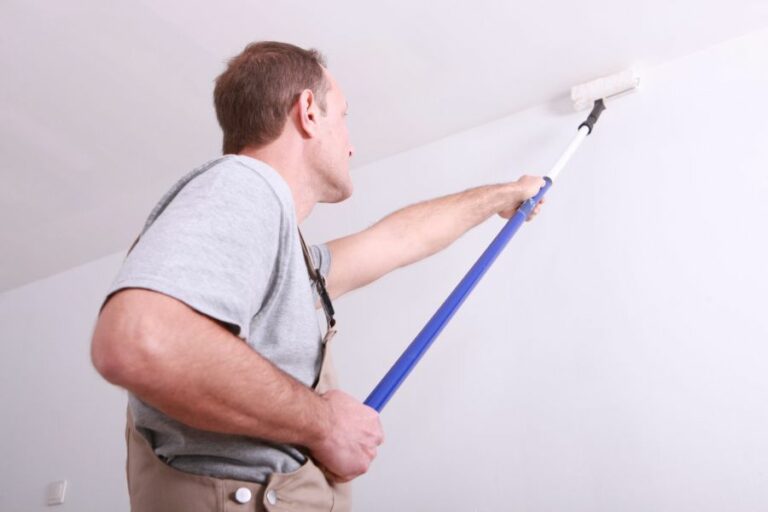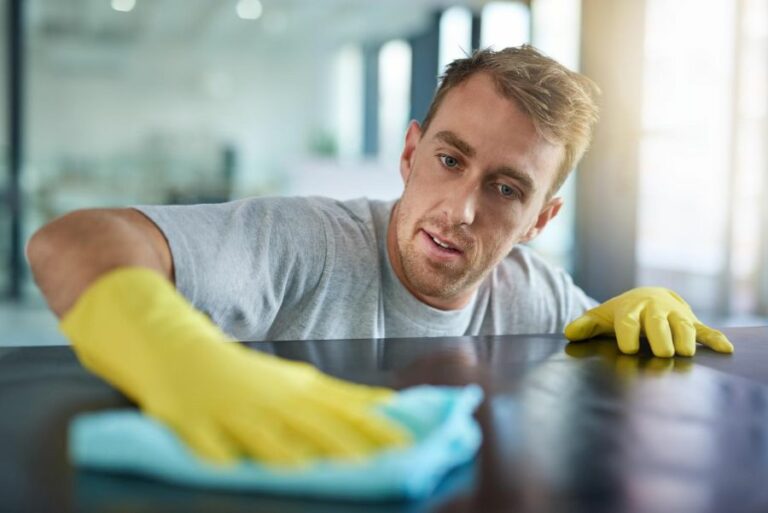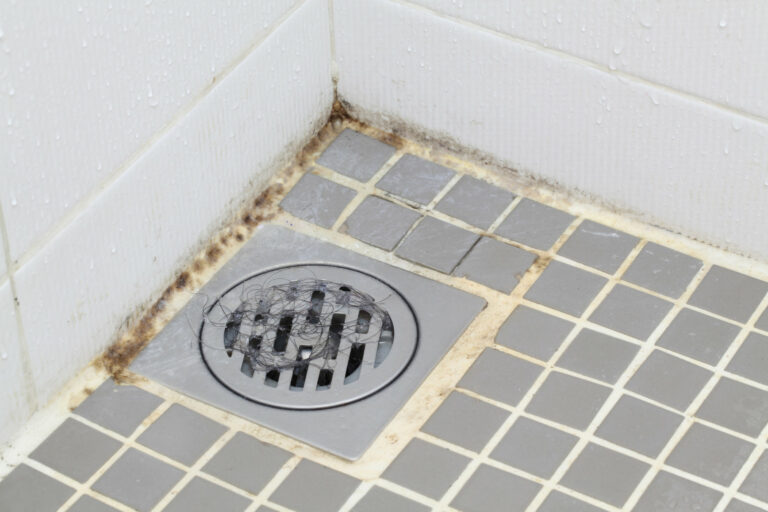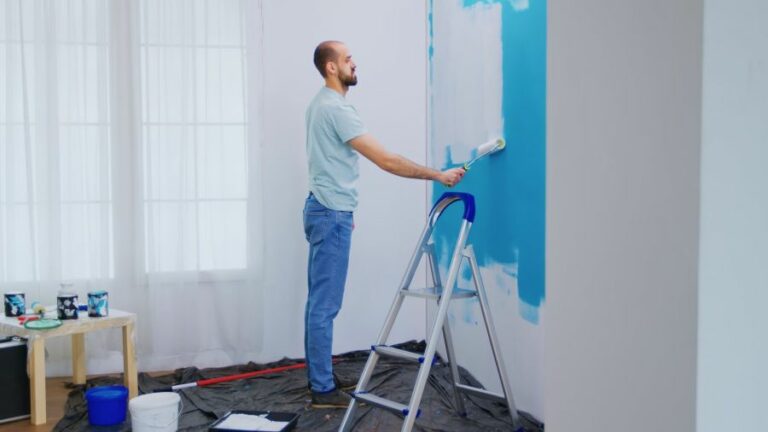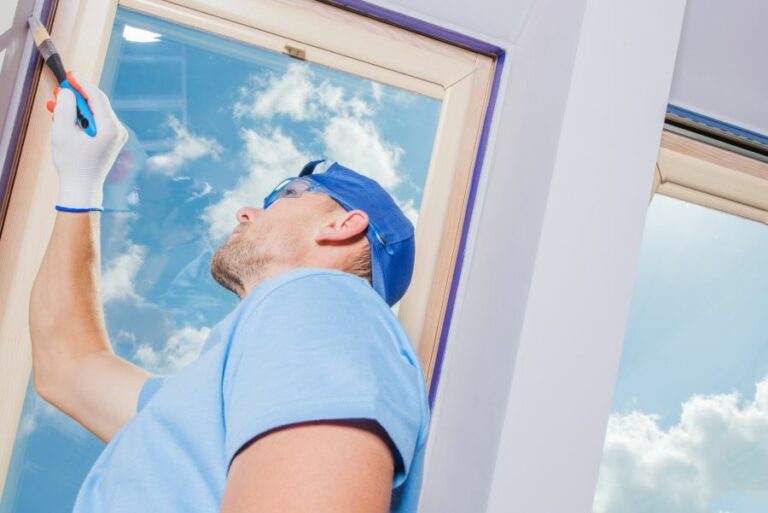Paint Longevity: The Role Of Surface Prep. What Pros Say
You’re not alone if you’ve ever wondered why your newly painted walls or furniture lose their luster after a short period. Many people experience the frustration of seeing their hard work fade away despite using high-quality paint. However, the secret to long-lasting and vibrant results may not lie solely in the quality of the paint itself.
Paint longevity: the role of surface prep:
Surface preparation is crucial in paint longevity, impacting visual appeal and structural integrity. Properly preparing a surface ensures paint durability and prevents peeling or flaking. Key steps include cleaning the surface, repairing imperfections, and applying a suitable primer. Investing in thorough surface preparation saves time and money in the long run by ensuring a lasting and durable paint finish.

Discover the secrets behind the long-lasting look of your favorite paintings! We delve into the crucial role surface preparation plays in paint longevity, sharing tips, techniques, and expertise to ensure your masterpieces stand the test of time. Read on and unlock the potential of perfect surface prep!
Contents
- 1 Long-lasting Paint: Significance of Surface Preparation
- 1.1 • Importance of Surface Preparation in Paint Longevity
- 1.2 • Factors Affecting Paint Longevity: Surface Condition and Environment
- 1.3 • Cleaning the Surface: A Key Step for Paint Adhesion
- 1.4 • Repairing Surface Imperfections: A Must for Durable Paint
- 1.5 • Priming the Surface: Essential for Paint Longevity
- 1.6 • Conclusion: Surface Preparation and Paint Longevity
- 2 The Crucial Role of Surface Prep in Painting Projects
- 3 Secrets to Prolonging Paint Lifespan
- 4 Consequences of Skipping Surface Prep Before Painting
- 5 Importance of Substrate Surface Preparation in Painting
Long-lasting Paint: Significance of Surface Preparation
• Importance of Surface Preparation in Paint Longevity
Paint longevity plays a vital role in maintaining surfaces’ visual appeal and structural integrity. A well-prepared surface is essential for ensuring the durability and longevity of the paint.
The process of surface preparation, when done correctly, contributes significantly to the paint’s ability to adhere to the surface, preventing problems such as peeling or flaking.
Understanding the importance of surface preparation will help guide you on the steps to follow to achieve excellent paint longevity, ultimately saving both time and money in the long run.
• Factors Affecting Paint Longevity: Surface Condition and Environment
Before diving into the role of surface preparation in paint longevity, it is essential to understand the factors that can affect paint’s lifespan:
- Surface condition: The quality and condition of the surface being painted play a crucial role in paint longevity. Uneven or damaged surfaces can lead to premature paint failure.
- Environment: The surrounding environment can strongly impact paint longevity. For example, surfaces exposed to high levels of humidity, ultraviolet (UV) light, or harsh weather conditions will require special attention during surface preparation and the selection of appropriate paint products.
With these factors in mind, let’s explore various surface preparation techniques that can contribute to improved paint longevity.
• Cleaning the Surface: A Key Step for Paint Adhesion
The first step in preparing a surface for painting is to ensure it is clean and free of debris, dust, and contaminants. Depending on the surface type and condition, different cleaning methods may be recommended:
- Dusting: Use a brush or cloth to remove loose dirt or debris from the surface. This step is particularly important for interior surfaces where dust can accumulate over time.
- Power washing: For exterior surfaces, power washing is an effective way to remove dirt, mildew, and mold from the surface. Ensure you follow proper power washing techniques to avoid damaging the underlying material.
- Chemical cleaning: In some cases, chemical cleaning agents may be necessary to remove stubborn stains, dirt, or grease. It is essential to follow the manufacturer’s instructions and choose an appropriate cleaning product for the surface.
- Sanding & scraping: If the surface has layers of old paint, loose paint, or other imperfections, sanding or scraping may be required to create a smooth surface for the new paint.
• Repairing Surface Imperfections: A Must for Durable Paint
Once the surface is clean and free of contaminants, the next step is to identify and repair any imperfections such as cracks, holes, or indentations.
These surface imperfections can cause a barrier in the paint’s ability to bond with the surface, leading to reduced paint longevity. Addressing these issues during surface preparation is essential to achieve a long-lasting paint job.
Several methods can be used to repair surface imperfections:
- Putty or filler: For small holes, dents, or cracks, a putty or filler can be applied to the affected area. Once dry, the filled area should be sanded smooth to create an even surface for painting.
- Caulking: For gaps around window frames, doors, or other trim areas, caulking can be applied to provide a smooth and continuous surface for the paint.
- Replacing damaged material: In cases where the surface is severely damaged or deteriorated, it may be necessary to replace sections of the material.
Regardless of the chosen method, repairing surface imperfections is a vital step in enhancing paint longevity.
• Priming the Surface: Essential for Paint Longevity
The final step in surface preparation is applying a primer. Primers are designed to help paint better adhere to the surface, providing a stable base on which the paint can bond.
They also help to block stains, create a more uniform appearance, and improve paint durability, contributing to overall paint longevity.
The type of primer you choose should match the type of paint you’ll be using and the surface being painted. Some factors to consider when selecting a primer include:
- Paint type: Oil-based primers work best with oil-based paints, and water-based primers work best with water-based paints. Be sure to follow the manufacturer’s recommendations when selecting a primer to achieve optimal paint longevity.
- Surface material: Different primers are designed for various surface materials, so it’s crucial to choose a primer that is compatible with the underlying material to maximize paint longevity.
- Environment: The primer selection should also align with the environment, whether it is an interior or exterior application or an area exposed to high levels of humidity or harsh weather conditions.
By choosing the right primer, you can significantly improve paint adhesion and longevity.
• Conclusion: Surface Preparation and Paint Longevity
Surface preparation is a critical aspect of achieving long-lasting paint durability. By thoroughly cleaning, repairing, and priming the surface, you can ensure that the paint bonds well to the surface, providing an attractive and long-lasting finish.
Taking the time to invest in proper surface preparation will ultimately save you time and money in the long run, as your paint will withstand the test of time in both appearance and durability.
The Crucial Role of Surface Prep in Painting Projects
• A Crucial Step for a Successful Paint Job
Surface preparation is an essential part of any painting project, often determining the success or failure of the final outcome. Properly prepared surfaces ensure a long-lasting and high-quality paint job, preventing future issues such as peeling, blistering, or fading.
• Assessing the Surface Condition
Before beginning a painting project, it’s crucial to evaluate the state of the surface you’ll be working on. This step determines the necessary preparation methods and highlights any potential issues that need to be addressed.
Check the surface for loose or peeling paint, dirt, grease, and any other substances that might affect the paint’s adherence. When examining a surface, pay close attention to previous coatings. A well-executed paint job will be built on layers that adhere seamlessly to each other.
• Cleaning the Surface
Once you’ve assessed the surface’s condition, it’s time to clean it thoroughly. This process involves removing any dirt, dust, grease, or other impurities. It’s important to use the appropriate cleaning agents and methods for the specific surface to avoid damage or affecting the paint’s adhesion.
– Defeat Dirt and Dust
A simple yet effective way to clean a surface is by using a soft-bristle brush or cloth to remove dust, cobwebs, and other debris. For exterior paint jobs, a pressure washer can be highly effective in removing dirt and grime from surfaces.
Keep in mind that excessive water pressure can damage certain surfaces, such as wood or softer masonry, so be sure to adjust the pressure accordingly.
– Removing Grease and Oil
If the surface is greasy, a solution of mild detergent and warm water can help break down the grease for easier removal. Rinse the surface thoroughly with clean water to remove any detergent residue.
For stubborn oil stains on concrete surfaces, you may use a poultice made of absorbent material and a cleaning agent, like trisodium phosphate (TSP) or a commercial degreaser.
The poultice should be applied to the affected area and left for several hours, allowing the cleaning agent to break down the oil and the absorbent material to pull it from the surface.
• Addressing Previous Coatings
When the surface is clean, the next step is to remove any loose or peeling paint. For small areas, you can use a manual scraper or sanding block. For larger areas, an electric sander or power scraper can speed up the process.
After removing loose coatings, take care of any unevenness between the layers. Sand the edges of the remaining coatings until they’re smooth and feathered to create a seamless transition between the old and new paint.
• Repairing Surface Damage
In addition to cleaning and addressing previous coatings, addressing any damage to the surface is essential. This can include filling holes, cracks, or gouges with suitable patching material or replacing damaged sections of the surface entirely.
For wooden surfaces, use wood filler or putty to fill in any cracks or holes. For masonry or stucco, use a patching compound specifically formulated for those materials.
• Priming the Surface
Applying a coat of primer to the prepared surface is crucial to ensure good paint adhesion and coverage. A quality primer will seal porous surfaces, provide a consistent base for the paint, and extend the longevity of the paint job.
Primers can be specialized for different surfaces and paint types, so be sure to choose the appropriate product for your project.
• Final Thoughts
In conclusion, surface preparation is a critical aspect of painting that should never be overlooked. By taking the time to thoroughly clean, repair, and prime surfaces, you’re setting the stage for a successful and long-lasting paint job.
Investing effort into proper surface preparation will save you time, money, and frustration in the long run. So, remember to give your painting surfaces the care and attention they deserve for a professional and durable finish.
Secrets to Prolonging Paint Lifespan
Paint longevity is a crucial factor to consider when selecting and applying paint for your home, office, or any other surface. Ensuring that your paint lasts longer not only provides an appealing appearance but also offers protection from external factors.
• The Importance of Paint Composition
The composition of the paint plays a significant role in its longevity. High-quality paints tend to last longer than their low-quality counterparts.
Two main types of paint are available on the market: oil-based and water-based (latex) paints. Each type has its advantages and drawbacks when it comes to longevity.
– Oil-Based Paints
Oil-based paints are known for their durability and longevity. They offer excellent resistance to wear, making them ideal for high-traffic areas or surfaces that require frequent cleaning.
However, due to environmental concerns and strict regulations, many manufacturers have switched to producing latex paints, which are more environmentally friendly.
– Latex (Water-Based) Paints
Latex paints have come a long way in recent years, with significant improvements in their durability and longevity. They are less prone to yellowing and can resist mold and mildew growth better than oil-based paints. These paints also dry faster, which reduces the chances of defects such as sagging or blistering.
When selecting paint, consider a high-quality exterior latex paint with added acrylic resins. These resins provide added durability and flexibility, ensuring your paint job remains intact for an extended period.
• Proper Surface Preparation
Proper surface preparation is essential for achieving a long-lasting paint job. By thoroughly treating and preparing the surface, you can ensure better adhesion and coverage, which can significantly impact the paint’s lifespan.
– Cleaning the Surface
Before applying any paint, you need to clean the surface to remove dirt, dust, grime, mold, and mildew. A clean surface will allow the paint to adhere better, thus, increasing its lifespan. You can use a pressure washer or scrub with a mild detergent, depending on the level of dirt accumulated on the surface.
– Repairing and Priming the Surface
Inspect the surface for any defects, such as cracks, holes, or peeling paint, and repair them accordingly. For instance, fill cracks and holes with the appropriate filler or patching compound, and scrape off any loose or peeling paint.
Once the surface is clean and repaired, apply a high-quality primer to ensure better paint adhesion and even coverage. Priming is especially crucial when painting over porous or stained surfaces, as it prevents the paint from being absorbed or discolored by the underlying material.
An excellent primer will contribute significantly to the longevity of the paint job.
• Application Techniques and Conditions
The way you apply paint and the conditions during application can also affect paint longevity. To ensure a long-lasting paint job, consider the following tips:
– Proper Application Technique
Use the appropriate technique for paint application, such as using a brush, roller, or sprayer. Each method has its benefits and drawbacks, so choose the one that best suits the type of surface and paint you are working with.
Regardless of the method used, ensure even paint coverage by applying multiple thin coats instead of a single thick coat. Multiple coats provide better protection against external factors and contribute to paint longevity.
– Optimal Weather Conditions
Always apply paint in favorable weather conditions. Avoid painting when it’s too hot, too cold, or when there is high humidity. Ideal temperatures for most paint applications range from 50 to 80 degrees Fahrenheit, and humidity should be below 85%.
Painting under optimal conditions ensures that the paint dries and cures effectively, resulting in a more durable and resilient finish.
• Regular Maintenance and Care
Proper maintenance and care of painted surfaces can significantly extend the lifespan of the paint job. Regular inspection, cleaning, and minor repairs can maintain the paint’s appearance and protective qualities.
– Surface Inspection
Periodically inspect the painted surface for any signs of damage, such as chipping, peeling, cracking, or fading. Identify and address any issues promptly to prevent further deterioration that may shorten the paint’s lifespan.
– Cleaning and Maintenance
Keep the painted surface clean and free from dirt and pollutants that can degrade the paint over time. Use a gentle cleaning solution and soft-bristle brush or sponge to clean the surface without causing any damage to the paint.
– Repairs and Touch-Ups
When necessary, repair any minor damage to the painted surface, such as filling small cracks or patching holes. Touch up areas with peeling or chipped paint to maintain a consistent and protective paint layer.
In conclusion, factors such as paint composition, proper surface preparation, application techniques, and regular maintenance all contribute to the longevity of a paint job.
By considering these factors and applying best practices, you can ensure a long-lasting and attractive paint finish that will stand the test of time.
Consequences of Skipping Surface Prep Before Painting
• Consequences of Skipping Surface Preparation
Neglecting surface preparation before painting can lead to a multitude of problems. Some common issues that may arise include:
– Poor Adhesion
Without proper surface preparation, the paint may not adhere correctly to the surface. This can result in premature paint failures, such as peeling, flaking, or blistering. Proper surface preparation ensures the paint has the best chance of adhering and providing a durable, long-lasting finish.
– Uneven Appearance
A surface that has not been prepared correctly can lead to an uneven or patchy appearance in the final paint job. This is caused by irregularities in the surface, which may affect the paint’s thickness and consistency.
By appropriately preparing the surface, you can ensure that the paint goes on more evenly, creating a more visually appealing end result.
– Reduced Durability
The longevity of a paint job is significantly impacted by the preparation of the surface it is applied to. A poorly prepared surface is more likely to experience paint failure, requiring more frequent touch-ups or repainting.
Investing time in surface preparation can save time and money in the long run by ensuring a more durable paint job.
• The Surface Preparation Process
– Cleaning the Surface
The first step in preparing a surface for painting is to ensure it is clean and free from contaminants. This includes removing dirt, dust, grease, and any other debris that may be present on the surface. A clean surface will allow the paint to adhere more effectively, ensuring a better overall finish.
For exterior surfaces, a pressure washer is often the most effective method of cleaning, while interior surfaces can typically be cleaned with a combination of soap and water or a mild cleaning solution.
– Repairing Defects
Once the surface is clean, it’s essential to repair any defects, such as cracks, holes, or dents. Filling these imperfections with an appropriate filler material will create a smoother surface for the paint to adhere to.
Be sure to follow the manufacturer’s instructions when using filler materials and allow the repairs to dry fully before proceeding.
– Sanding and Smoothing
After repairing any defects, the next step is to sand the surface. Sanding helps to create a smooth, even surface and improves paint adhesion.
Using the appropriate grit sandpaper for the surface you are working on is essential, as improper sanding can cause further damage or create an uneven finish.
For example, lower-grit sandpaper is more suitable for rough surfaces, while higher-grit sandpaper is better suited for smooth surfaces that need only minor smoothing.
– Priming the Surface
Priming the surface before applying paint offers numerous benefits, including improved paint adhesion, enhanced durability, and a more consistent appearance. Primers ensure the paint has a uniform surface to adhere to and can also help to conceal any stains or discolorations in the underlying surface.
Be sure to select a primer that is specifically designed for the type of surface you are painting, and follow the manufacturer’s instructions for proper application.
– Taping and Protecting
Finally, it’s crucial to protect the surrounding areas from paint splatters and drips by using painter’s tape and drop cloths. This step can save time and frustration by preventing the need to clean up paint from unwanted areas after completing the painting process.
• In Conclusion
Surface preparation is a critical step in achieving a professional and durable paint job. By investing time and effort into properly cleaning, repairing, and priming the surface before painting, you can save yourself time, money, and frustration in the long run.
For more information on surface preparation and painting, the US Department of Energy offers helpful guides and resources.
Importance of Substrate Surface Preparation in Painting
• Overview
Surface preparation is a critical step in any coating or bonding process. A properly prepared surface can significantly improve the performance and longevity of a protective coating or adhesive.
• The Role of Surface Preparation in Adhesion
– The Science Behind Adhesion
The primary goal of surface preparation is to promote adhesion between the substrate (i.e., the material being coated or bonded) and the coating or adhesive. Adhesion is the result of various molecular interactions between the two surfaces.
To better understand adhesion, let’s review a few key principles:
- Mechanical bonding: This occurs when a coating penetrates into the pores or rough spots on a substrate’s surface, creating a strong mechanical lock. This lock can be likened to the roots of a tree intertwined with soil.
- Chemical bonding: When the substrate and the applied material share chemical compatibility, chemical bonding occurs. It involves sharing or transferring electrons between the two surfaces, forming a strong bond at the molecular level.
- Dispersion forces (van der Waals forces): Although weaker than chemical bonds, dispersion forces play a crucial role in adhesion. These forces exist in all materials, and they arise from temporary fluctuations in electron distributions.
Surface preparation aims to maximize these adhesion mechanisms by modifying the substrate’s surface topography and chemistry.
– The Importance of a Clean Substrate Surface
Contaminants on a substrate’s surface can significantly hinder adhesion. Common contaminants include dirt, grease, oil, rust, and previous coatings. Ensuring a clean surface is essential for proper adhesion and consistent performance. Below, we discuss several key reasons why a clean substrate is essential.
Decreased Chances of Delamination and Peeling
Contaminants can create a barrier between the substrate and the applied material, preventing proper adhesion. In the case of coatings, this can lead to delamination and peeling, compromising the longevity and effectiveness of the protective layer.
Improved Corrosion Resistance
Rust and other contaminants can limit a coating’s ability to protect against corrosion. In some cases, these contaminants can even accelerate the formation of new corrosion. Preparing the surface to remove existing rust and other contaminants is crucial to ensuring optimal corrosion resistance.
Bond Strength
For adhesives, bond strength is critical. Contaminants on a substrate’s surface can significantly weaken the bond, leading to premature failure or an inability to carry the intended load. A clean surface will ensure a more reliable bond.
• Surface Roughness and Adhesion
Another critical aspect of surface preparation is creating the appropriate surface roughness. An optimal surface roughness profile can increase the contact area between the substrate and the applied material, promoting mechanical adhesion.
– The Importance of Surface Profile
Abrasive blasting, etching, or mechanical methods can create a desirable surface profile. The ideal profile depends on the specific material and application. For example, a more aggressive profile may be required for high-performance coatings, whereas a smoother profile might be needed for thin films.
– Balancing Roughness Requirements
It is crucial to strike the right balance between surface roughness and the specific coating or adhesive system requirements. Excessively rough surfaces can lead to an uneven coating layer, compromising the protective qualities and aesthetics.
On the other hand, surfaces that are too smooth may not provide sufficient mechanical adhesion.
• Summary and Recommendations
From improving adhesion to preventing delamination, surface preparation plays a crucial role in any coating or bonding application. To ensure optimal performance and longevity, it is essential to:
- Thoroughly clean the substrate surface, removing contaminants such as rust, dirt, grease, and old coatings.
- Achieve the appropriate surface roughness to promote mechanical adhesion.
- Perform regular quality checks during the surface preparation process, validating cleanliness and the desired surface profile.
In addition to these points, always consult and follow the recommendations provided by the coating or adhesive manufacturer, as they offer specific guidance tailored to their products.

